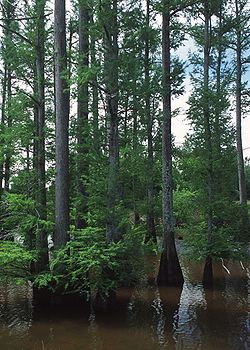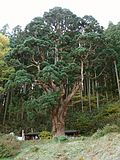| Taxodioideae | |
|---|---|
 | |
| Bald Cypress forest in a central Mississippi lake | |
| Scientific classification | |
| Kingdom: | Plantae |
| Clade: | Tracheophytes |
| Clade: | Gymnospermae |
| Division: | Pinophyta |
| Class: | Pinopsida |
| Order: | Cupressales |
| Family: | Cupressaceae |
| Subfamily: | Taxodioideae |
| Genera | |
Taxodioideae is a subfamily in Cupressaceae. [2]


